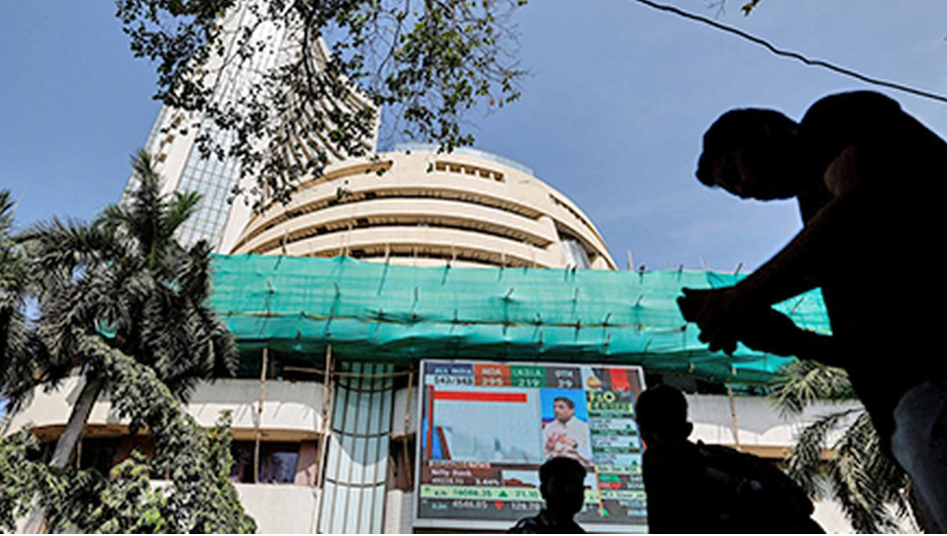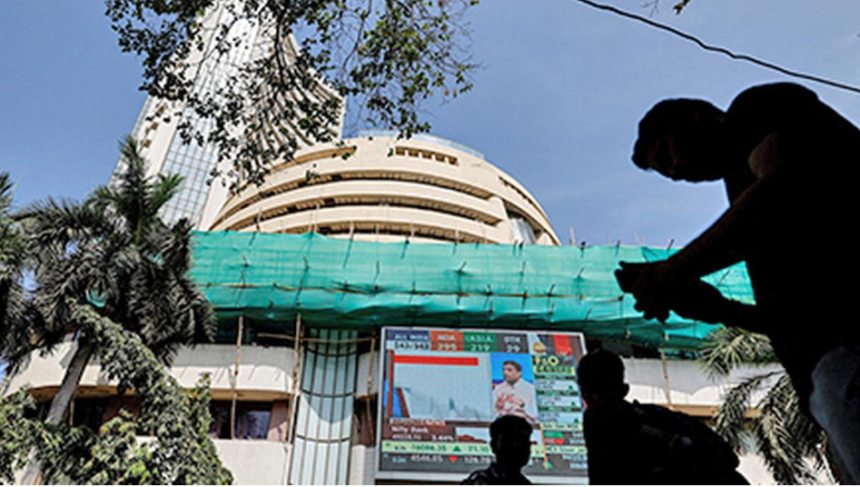1. Introduction: Turbulence Hits Indian Stock Markets
Sensex and Nifty Indian equity markets faced significant downward pressure as the Sensex and Nifty tumbled nearly 1% on persistent foreign fund outflows. With Foreign Institutional Investors (FIIs) offloading equities worth ₹3,362.18 crore on Wednesday, market sentiment took a hit. Adding to the apprehension was investor focus on Tata Consultancy Services (TCS) earnings, expected to provide insights into corporate performance amid macroeconomic challenges.
2. Market Performance Overview
2.1 Sensex and Nifty Fall
The benchmark indices recorded notable losses:
- Sensex: Fell over 600 points, ending below the critical 66,500 level.
- Nifty: Dropped below the 19,800 mark, posting significant intraday volatility.
2.2 Sectoral Impact
All major sectors saw a downturn, with technology, banking, and energy stocks contributing significantly to the market decline.
3. Factors Behind the Market Decline
3.1 Persistent Foreign Fund Outflows
The consistent sell-off by FIIs has created headwinds for the equity markets. Several factors have contributed to this trend:
- Rising US Bond Yields: Higher yields in the US treasury market attract foreign funds away from emerging markets.
- Global Rate Hikes: Central banks globally continue tightening monetary policy, raising borrowing costs for corporates and dampening market sentiment.
 For the more information click on this link
For the more information click on this link
3.2 Weak Global Cues
Global markets have been under stress due to fears of prolonged inflation and geopolitical tensions, further spilling over to Indian equities.
3.3 Domestic Concerns
Domestic factors such as inflationary pressures, subdued demand recovery in certain sectors, and upcoming corporate earnings volatility have added to the gloom.
4. Spotlight on TCS Earnings
4.1 Why TCS Earnings Matter
As a bellwether of the Indian IT sector, TCS’s earnings are closely watched for insights into the sector’s growth trajectory. With the ongoing global macroeconomic slowdown, investors are particularly keen on:
- Revenue Growth Trends: Any signs of slowing deal momentum, especially in the US and European markets.
- Profit Margins: Rising costs and currency fluctuations might impact profit margins.
- Guidance: Future guidance from the management will indicate the potential challenges and opportunities in the IT space.
4.2 Expectations from TCS
Analysts anticipate a mixed bag in Q3 results:
- Modest revenue growth given slower client spending.
- Potential currency tailwinds supporting topline growth.
- Margin recovery efforts through operational efficiencies.
5. Sectoral Performance: Winners and Losers
5.1 Technology Stocks
The IT sector bore the brunt of the fall as investors remained cautious ahead of earnings announcements. Major players like Infosys, TCS, and Wipro all saw declines.
5.2 Banking and Financials
Banking stocks experienced selling pressure, Sensex and Nifty partly influenced by foreign fund outflows. Key players like HDFC Bank and ICICI Bank ended in the red.
5.3 Energy Sector
Oil and gas majors saw declines amid fluctuating crude prices and fears of weaker global demand.
6. Investor Sentiment: Cautious Approach Prevails
6.1 Retail Participation
Retail investors appear cautious as the market navigates foreign fund withdrawals and global uncertainties. This sentiment is reflected in muted intraday recoveries.
6.2 FIIs vs. DIIs
While FIIs continued offloading, Domestic Institutional Investors (DIIs) attempted to provide some stability by purchasing equities, though their efforts fell short of offsetting broader selling.
7. Broader Economic Implications
7.1 Indian Rupee under Pressure
The rupee weakened against the US dollar, exacerbated by FII outflows and rising crude oil prices, Sensex and Nifty which increase import costs.
7.2 Implications for Corporate Financing
Sustained outflows may tighten liquidity for corporates relying on external funding, impacting expansion plans.
7.3 Growth Concerns
If the trend persists, it could dampen market confidence and hinder economic growth recovery.
8. Historical Context: FIIs and Market Impact
Foreign fund inflows and outflows have traditionally played a pivotal role in Indian equity markets. A historical look provides insights:
- During the COVID-19 pandemic, markets saw significant inflows as India attracted foreign funds due to economic resilience.
- Recent trends, however, showcase outflows amid global tightening and risk-aversion sentiment, Sensex and Nifty emphasizing India’s vulnerability to global cues.
9. What Lies Ahead for Indian Markets?
9.1 Anticipated Policy Responses
With the Federal Reserve’s stance on interest rates being a crucial driver, markets will keep a close watch on upcoming US Federal Reserve meetings and guidance.
9.2 Corporate Earnings Season
Investors are likely to react strongly to Q3 earnings. Key sectors under scrutiny include IT, Sensex and Nifty banking, and consumer goods.
9.3 Domestic Policies
Pro-growth government measures, particularly in Budget 2025, could help counteract bearish sentiment.
10. Expert Insights: Analysts Weigh In
- Market Analysts: “The Indian equity markets remain attractive in the long run, Sensex and Nifty but the short-term outlook is clouded by global volatility and persistent FII outflows.”
- IT Sector Analysts: “The IT sector could recover in the medium term as businesses adjust to macroeconomic realities and enhance spending on digital transformation.”
11. Global Markets Snapshot
India’s struggles were mirrored globally:
- US Markets: Dow Jones and Nasdaq reported losses, weighed down by inflation data.
- European Markets: Declined on recession fears amid tightening monetary policies.
- Asian Markets: Experienced mixed performances as investors grappled with weak Chinese demand and rate hike fears.
 For the more information click on this link
For the more information click on this link
12. Recommendations for Investors
12.1 Diversification as a Strategy
To weather the current storm, financial advisors suggest diversifying portfolios across asset classes, geographies, and sectors.
12.2 Long-Term Perspective
Investors are advised to avoid knee-jerk reactions and focus on long-term growth potential, Sensex and Nifty particularly in sectors like technology and banking.
12.3 Stay Updated on Earnings
With corporate earnings being a near-term driver, staying informed on sector-wise performance is critical.
13. Conclusion: Navigating Uncertainty
The Indian equity markets face challenging times as unabated foreign fund outflows and global uncertainties weigh on sentiment. However, the focus on TCS earnings and broader corporate performance in Q3 could provide crucial insights into recovery potential.
While the short-term outlook may appear bearish, Sensex and Nifty India’s economic fundamentals and proactive policy measures offer hope for long-term growth. Investors must remain cautious yet optimistic, balancing market volatility with strategic investment choices. ALSO READ:- New Credit Guarantee Scheme for MSMEs: A Game-Changer for Small Businesses 2025





